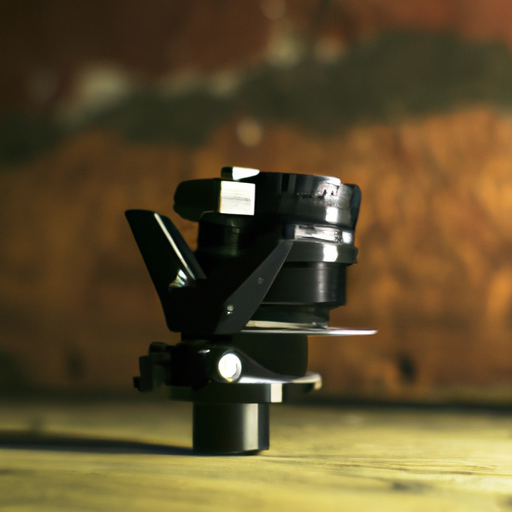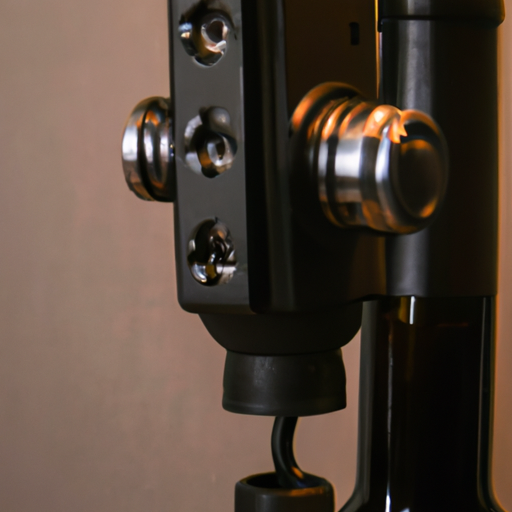
The Art of Wine Photography: Capturing the Essence of Vinography
Exploring the Visual World of Vinography: Parts & Tools
The art of wine photography is a captivating endeavor that allows photographers to capture the essence of vinography. With the right tools and a keen eye for detail, photographers can create stunning images that showcase the beauty and complexity of wine. In this article, we will explore the various parts and tools that are essential for capturing the visual world of vinography.
One of the most important parts of wine photography is the subject itself – the wine. The bottle, label, and contents all play a crucial role in creating a visually appealing image. Photographers must carefully select the wine they wish to photograph, considering factors such as color, texture, and branding. Each bottle tells a unique story, and it is the photographer’s job to capture that story through their lens.
In addition to the wine itself, the glassware used in wine photography is also an important part of the equation. Different types of glasses can enhance the visual appeal of the wine, showcasing its color and texture in different ways. Photographers often experiment with various glassware options to find the perfect vessel for their subject. Whether it’s a classic wine glass or a unique piece of stemware, the choice of glass can greatly impact the final image.
Lighting is another crucial tool in the world of vinography. The right lighting can make or break a photograph, highlighting the intricate details of the wine and creating a sense of depth and dimension. Natural light is often preferred by photographers, as it can bring out the true colors and characteristics of the wine. However, artificial lighting can also be used to create dramatic effects and add a touch of creativity to the image. Photographers must carefully consider the direction, intensity, and color temperature of the light to achieve the desired result.
To capture the perfect shot, photographers often rely on a variety of tools and accessories. Tripods are essential for keeping the camera steady and ensuring sharp, focused images. Macro lenses allow photographers to capture the smallest details of the wine, such as the texture of the label or the bubbles in a glass of sparkling wine. Reflectors and diffusers can be used to manipulate the light and create different effects. These tools, along with others such as remote shutter releases and lens filters, help photographers to achieve their vision and bring their images to life.
Post-processing is the final step in the art of wine photography. Editing software allows photographers to fine-tune their images, adjusting colors, contrast, and sharpness to create a polished final product. It is important for photographers to strike a balance between enhancing the natural beauty of the wine and maintaining its authenticity. The goal is to create an image that accurately represents the wine while also captivating the viewer.
In conclusion, the art of wine photography is a visually stunning endeavor that requires skill, creativity, and the right tools. From selecting the perfect wine and glassware to manipulating light and using various accessories, photographers have a range of options at their disposal to capture the essence of vinography. With careful attention to detail and a passion for the subject, photographers can create images that showcase the beauty and complexity of wine, inviting viewers to explore the visual world of vinography.
Unveiling Vinography: A Journey into the World of Wine Visualization

Exploring the Visual World of Vinography: Parts & Tools
Unveiling Vinography: A Journey into the World of Wine Visualization
Wine has long been a beloved beverage, enjoyed by connoisseurs and casual drinkers alike. Its complex flavors and aromas have captivated our senses for centuries. But have you ever wondered how to truly appreciate and understand the nuances of wine? Enter Vinography, a revolutionary tool that allows us to explore the visual world of wine.
Vinography is a unique platform that combines the art of wine tasting with the power of data visualization. It takes the vast amount of information about wines and presents it in a visually stunning and easily digestible format. By using various tools and techniques, Vinography allows us to delve into the intricate details of wine, from its origins to its tasting notes.
One of the key components of Vinography is its interactive maps. These maps provide a visual representation of wine regions around the world, allowing users to explore the different terroirs and climates that contribute to the unique characteristics of each wine. With just a few clicks, you can travel from the rolling hills of Tuscany to the sun-soaked vineyards of Napa Valley, gaining a deeper understanding of how geography influences the taste of wine.
In addition to maps, Vinography also offers a variety of charts and graphs that help us analyze and compare different wines. For example, the flavor wheel allows us to visually identify the various aromas and flavors present in a wine. By simply selecting a wine from the database, we can see a breakdown of its tasting notes, ranging from fruity and floral to earthy and spicy. This tool not only enhances our tasting experience but also helps us develop a more refined palate.
Another fascinating feature of Vinography is its vintage charts. These charts display the quality of wines from different years, allowing us to see how weather conditions and other factors impact the overall taste and aging potential of a wine. By studying these charts, we can make more informed decisions when purchasing or cellaring wines, ensuring that we choose bottles that will continue to improve with time.
Vinography also offers a unique tool called the food pairing guide. This guide suggests the best wine pairings for a wide range of dishes, taking into account the flavors and textures of both the food and the wine. Whether you’re planning a dinner party or simply looking to enhance your meal, this tool can help you find the perfect wine to complement your culinary creations.
In conclusion, Vinography is a powerful tool that allows us to explore the visual world of wine. Through its interactive maps, charts, and graphs, we can gain a deeper understanding of the complexities of wine, from its origins to its tasting notes. Whether you’re a seasoned sommelier or a curious wine enthusiast, Vinography is sure to enhance your appreciation and enjoyment of this timeless beverage. So, raise a glass and embark on a journey into the world of wine visualization with Vinography. Cheers!
Vinography Tools and Techniques: Enhancing the Visual Experience of Wine
Exploring the Visual World of Vinography: Parts & Tools
Vinography Tools and Techniques: Enhancing the Visual Experience of Wine
When it comes to wine appreciation, the visual aspect plays a crucial role in our overall experience. The color, clarity, and viscosity of a wine can provide valuable insights into its age, quality, and even potential faults. To fully appreciate the visual world of vinography, it is essential to understand the various parts and tools that enhance our perception of wine.
One of the key components of vinography is the wine glass. The shape and size of the glass can significantly impact the visual experience. For example, a tulip-shaped glass with a narrow opening concentrates the aromas, while a wider bowl allows for better aeration. Additionally, the transparency of the glass is crucial in assessing the color and clarity of the wine. Crystal glasses, with their superior clarity, are often preferred by wine enthusiasts for this reason.
Another important tool in vinography is the wine decanter. Decanting is the process of transferring wine from its bottle to a decanter, allowing it to breathe and separate any sediment that may have formed over time. This not only improves the taste but also enhances the visual appeal of the wine. As the wine cascades down the sides of the decanter, its vibrant colors come to life, captivating our senses even before the first sip.
To fully appreciate the visual nuances of wine, proper lighting is essential. Natural daylight or neutral white light is ideal for examining the color and clarity of the wine. Harsh or colored lighting can distort the perception of the wine’s true colors. Adequate lighting also allows us to observe the legs or tears that form on the sides of the glass after swirling. These tears can indicate the alcohol content and viscosity of the wine, providing valuable clues about its body and texture.
The color of wine is a visual indicator of its age, grape variety, and winemaking techniques. White wines range from pale straw to golden yellow, with older wines often showing deeper amber hues. Red wines can vary from vibrant ruby to deep garnet or even brick red in older vintages. The intensity and saturation of the color can also reveal the wine’s concentration and potential aging potential.
Clarity is another important aspect of vinography. A clear wine indicates proper filtration and absence of any sediments or impurities. Cloudiness or haziness can be a sign of a faulty wine, caused by microbial spoilage or excessive fining. By examining the wine against a white background, such as a tablecloth or a piece of paper, we can easily detect any clarity issues.
The viscosity or “legs” of a wine refers to the way it clings to the sides of the glass after swirling. This phenomenon is caused by the wine’s alcohol and glycerol content. Wines with higher alcohol and glycerol levels tend to have thicker and slower-moving legs. This can indicate a fuller-bodied wine with more texture and richness.
In conclusion, the visual world of vinography is a fascinating realm that adds depth and complexity to our wine appreciation. By understanding the various parts and tools that enhance our visual experience, we can fully immerse ourselves in the colors, clarity, and viscosity of wine. From the shape of the glass to the lighting conditions, each element contributes to our understanding and enjoyment of this ancient elixir. So, next time you pour yourself a glass of wine, take a moment to appreciate its visual beauty before indulging in its taste.






